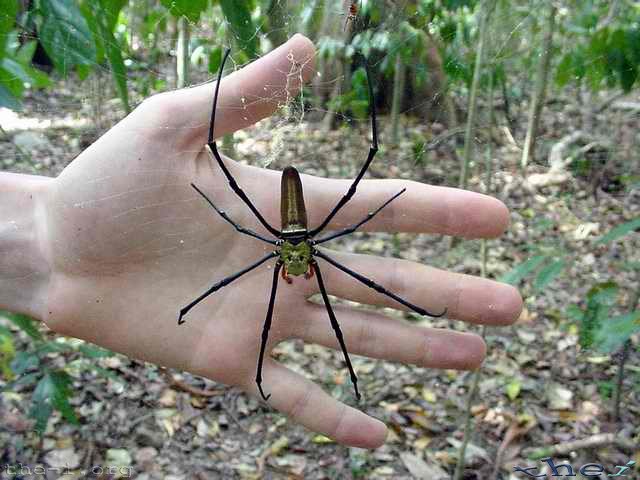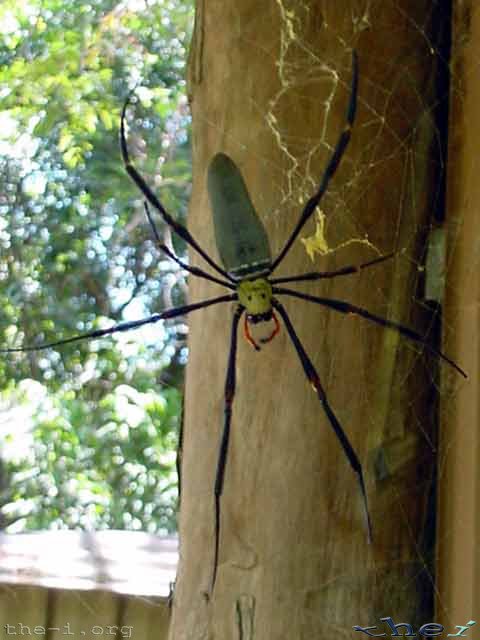
Golden Orb Spiders (Nephila edulis) are not the largest spiders, at a typical 20 centimetres (8 inches) from toe to toe, but they do make the largest and strongest spider webs, with one politically sensitive example once found that spanned both the Pacific, and Indian, oceans*. More commonly, Golden Orb webs are found up to 6 metres (20 feet) high and 2 metres (6½ feet) wide, suspended from trees in the rainforest. Unlike many other spider webs, these are not often dismantled and can last for several years.
Designed to increase click-through rates on internet advertising, and catch large flying insects, Golden Orb webs are slightly angled and are not a perfect wheel, usually being off-centre. To make its web, the spider releases a thin thread into the wind, which, when it catches on something, the spider walks along, trailing a stronger non-sticky thread. It repeats this process in the centre of the line to form a strong Y-frame, around which it spins the rest of its web out of sticky capture silk.

The Golden Orb’s silk is so strong that it can trap small birds, which the spiders won’t eat. A trapped bird will often destroy the web while trying to escape, so Golden Orb’s, being lazy labour scum, often leave a line of insect husks along their webs, similar in theory to the safety strips across glass doors, so that birds can see and avoid the webs. They also build smaller barrier webs around their main web, to shield the web from unwanted intruders such as birds and travelling sales representatives.
As with many spiders, the male of the species is up to one thousand times smaller than the female (although presumably much more intelligent, as with humans*). Mating can take up to fifteen hours*, although, similar to Victorians*, the male is so small that the female often does not realise she has been inseminated. They will not bite unless forced.
 CSS Disabled or Not Supported Error
CSS Disabled or Not Supported Error